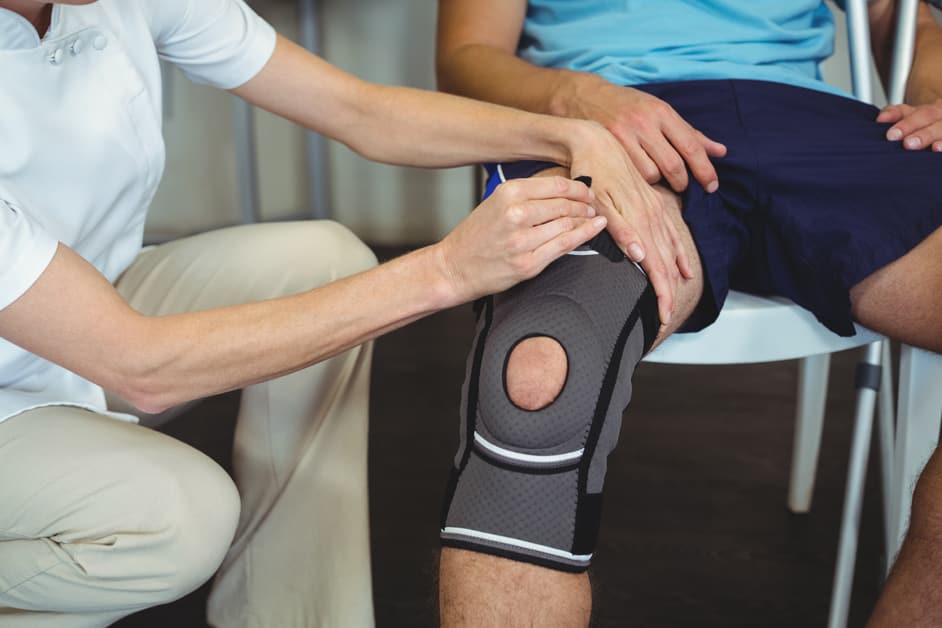Introduction
Stretching is important for healthy joints. Especially when it comes to knee pain. Whether you’re an athlete or not. Knowing how to stretch can be great for stress relief.
Benefits of stretching:
- Can provide temporary relief from knee pain related to arthritis.
- Improves joint mobility, decreases joint stiffness.
Foam rolling:
- Reduces tension in tight muscles around the knees.
- Lets you move more easily.
Exercise:
- Biking, swimming, and other activities help long-term management of knee pain.
- Building strength and promoting range of motion at the joint.
Benefits of Stretching
Stretching is a top-notch way to ease knee pain. It boosts flexibility and range of motion, allowing your knee to move more freely. Additionally, stretching boosts circulation which can help lessen soreness and inflammation.
Foam rolling can give you the same advantages as stretching. But, it puts a deeper focus on the knee area. Let’s chat about the advantages of stretching and foam rolling for knee pain relief.
Improved flexibility
Stretching can help your muscles get longer. This lets them move more easily. Do it often and you can feel like you’re more balanced. Plus, body alignment can improve too. Then, everyday tasks will be easier. Like lifting and standing for a long time. And activities that need you to stay still, like reading and writing, can be made better with stretching.
Reduced risk of injury
Stretching warms up the body and helps avoid tears, sprains, and overuse injuries. Prior to any strenuous physical activity, a dynamic warm-up is recommended. After this, static stretching is necessary for the active muscles used in sport and exercise. Increased flexibility decreases the risk of straining a muscle. Thus, stretching is a very important benefit.
Stretching regularly can ease tension in the muscles, and improve overall range of motion. This increased range of motion keeps joints flexible and reduces the risk of injury from sudden movements or excessive stress on joints during activities.
Improved range of motion
Stretching and foam rolling are awesome ways to better our range of motion and tackle knee pain. Stretching the muscles and connective tissue of the legs can help our joint mobility, lessen tension, and even discard lactic acid generated after a workout. Foam rolling does the same – it activates our nervous system and boosts blood flow to afflicted places. This action soothes tension, decreases stiffness in the muscles, and enlarges joint range of motion.
Plus, doing regular stretching and foam rolling can also prevent additional damage to joints from injuries or chronic conditions. Keeping our joints flexible diminishes the risk of soreness and inflammation later on.
Benefits of Foam Rolling
Foam Rolling is awesome for relieving tightness and reducing muscle discomfort. It’s a type of self-myofascial release (SMR) which can help:
- Decrease tightness in muscles
- Enhance blood flow to the area
- Diminish pain in knees.
Let us explore further, the advantages of foam rolling for knee discomfort relief!
Reduced muscle tension
Foam rolling is a great way to reduce tension in muscles and improve knee range of motion. It increases blood flow, aiding muscle recovery. It stretches muscle fibers, breaking down adhesions that cause pain and limit mobility.
Foam rolling releases tightness around the knee joint. It also helps correct muscle imbalances brought on by physical activity, sitting too long, or bad posture. A foam roller helps strengthen weak muscles, while decreasing tightness around the knees.
Using a foam roller before and after exercise lessens joint pain during movement. It also boosts mobility and increases knee range of motion.
Improved circulation
Foam rolling helps improve circulation in muscles. Pressure applied to tissue releases myofascial layers, which can restrict blood flow and nutrient exchange. When these restrictions are gone, circulation improves, inflammation decreases, and healing speeds up.
Stretching muscles increases blood flow, helping tightness go away and reducing muscle soreness. To get the most benefit, pair foam rolling and stretching with physical activity like exercises, running, or sports.
Improved joint mobility
Foam rolling is becoming more popular for reducing muscle and joint pain. It’s an advanced stretching technique that uses direct deep pressure across the muscle fibers to increase circulation. This helps release lactic acid and other metabolic waste from tight muscles, reducing stiffness and improving joint mobility.
Circulation in the joints is improved and swelling from inflammation decreased. Improved joint mobility also improves posture and athletic performance when combined with stretching exercises. Joint mobility strengthens muscles, joints, and connective tissue, decreasing injury risk. This is why health care providers are promoting foam rolling as an adjunct to traditional therapies to help manage musculoskeletal pain in athletes.
Stretching and Foam Rolling Techniques
Stretching and foam rolling can be great for relieving knee pain. Stretching helps with flexibility and posture. Foam rolling helps to break-up tight and knotted muscle tissues, reducing pain. Both are useful for decreasing knee pain and improving joint mobility.
In this article, we’ll discuss the different stretching and foam rolling techniques that can help with knee pain relief:
Quadriceps stretch
Quadriceps stretch is terrific! It increases flexibility and reduces knee pain. The muscles in the front of your thighs are targeted. Stand with feet hip-width apart. Cross one foot in front of the other. Bend the back knee until it almost touches the floor. Keep your back upright and pelvis tucked under. Feel a gentle stretch at the front of your thigh. Hold for 15-20 seconds. Switch and repeat on each side for 2-3 sets.
Foam rolling is an awesome way to reduce tension from tight muscles. This can lead to knee pain. Sit or stand with a foam roller at calf height. Place it between the shinbone and calf muscle on one side. Control the pressure. Move down towards the ankle joint. Switch sides when finished. Repeat 3 times per leg. Reduce tension which may cause discomfort.
Hamstring stretch
Hamstring stretches are a great way to ease knee pain caused by arthritis and tendonitis. Lie on your back and bring one leg up. Grasp your thigh or hamstring area and gently pull it towards your chest. Keep both feet on the ground, and don’t push your leg. Hold the stretch for 20-30 seconds, then relax. Don’t overstretch or force the motion beyond what’s comfortable.
To stretch further, try the cross-legged (or “open” figure-four) hamstring stretch. Start in a seated position, cross one ankle over opposite thigh, above the knee joint. Press down with both hands for leverage. Keep your chest and head tall and push your hips forward. Hold for 30 seconds, then switch sides. Foam rolling can help improve flexibility by applying pressure over time – roll your side of thigh from hip to knee joint. Apply extra pressure if needed at any tight spots.
Gluteal stretch
The gluteal stretch can help reduce knee pain. To do it:
- Lie on your back, with arms by your sides.
- Bend the right leg, knee close to or touching the floor. Keep the left leg straight and in line with your hip.
- Hug both knees into your chest and hold for 15-30 seconds.
- Gently relax and repeat 3-5 times on each leg.
After stretching, foam rolling can help loosen the muscles. Place a roller perpendicular to the left hip and lie on it. Apply gentle pressure with arms and/or legs, according to comfort and desired movement patterns. Roll slowly out away from the hip to below the tailbone, then reverse direction. Spend about 15-45 seconds per side, depending on discomfort, and repeat 2-3 sets. This can be done during pain relief therapy sessions or workout programs.
For lasting pain relief, engage holistic solutions. Share certified knowledge and talk with a qualified care provider. Explore foundational conversations and moments. Take insight from diverse, self-capable communities. Realize natural healing mindsets. Experience recoveries revealed!
Foam rolling
Foam rolling is a self-massage technique that increases flexibility, performance, and mobility. It’s a way to release tension and trigger points without going to a chiropractor or massage therapist. Foam rollers come in different shapes and sizes for your needs. They have small bumps to ease muscle soreness and tension.
When foam rolling, move slowly and always be aware of the pressure. It works best when you apply enough pressure to make it uncomfortable, but not painful. Concentrate on areas like the quadriceps, glutes, IT band, and calves. These are commonly used in daily movements and tightness can accumulate. Roll each area for at least 30 seconds. Do this for a total session of about 5 minutes.
Conclusion
Many scientific studies show that stretching and foam rolling can help with knee pain relief. Stretching can reduce tension and spasms, which can improve range of motion and ease movement. Furthermore, foam rolling may reduce inflammation and improve blood flow to the tissue. This helps with healing and reducing pain.
These activities are not a cure, but they may be good as an addition to traditional treatments like meds and pt. So, including stretching and foam rolling in knee care when experiencing pain can be helpful in providing relief.
Frequently Asked Questions
Q: What are the benefits of stretching and foam rolling for knee pain relief?
A: Stretching and foam rolling can help reduce knee pain by increasing flexibility and range of motion. Foam rolling also helps to decrease muscle tension and stiffness, while stretching helps to improve circulation and reduce inflammation. Both stretching and foam rolling can also help to improve strength and balance around the knee joint.
Q: How often should I stretch and foam roll for knee pain relief?
A: It is recommended to stretch and foam roll for knee pain relief at least 3-4 times per week. The intensity and duration of the stretching and foam rolling should be gradually increased over time. It is important to listen to your body and not to overdo it.
Q: What precautions should I take when stretching and foam rolling for knee pain relief?
A: It is important to warm up the muscles before stretching and foam rolling for knee pain relief to avoid injury. Start with gentle stretches and foam rolling and gradually increase the intensity and duration over time. If any pain or discomfort is felt during the stretching and foam rolling, stop immediately and see a doctor or physical therapist.





